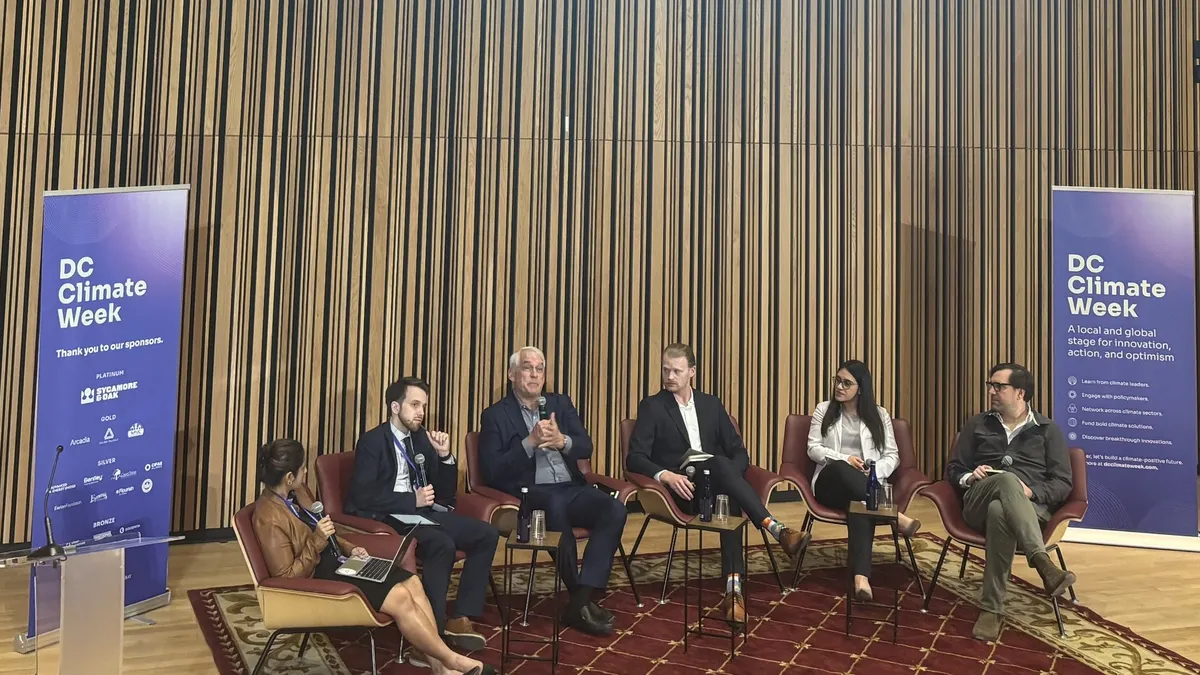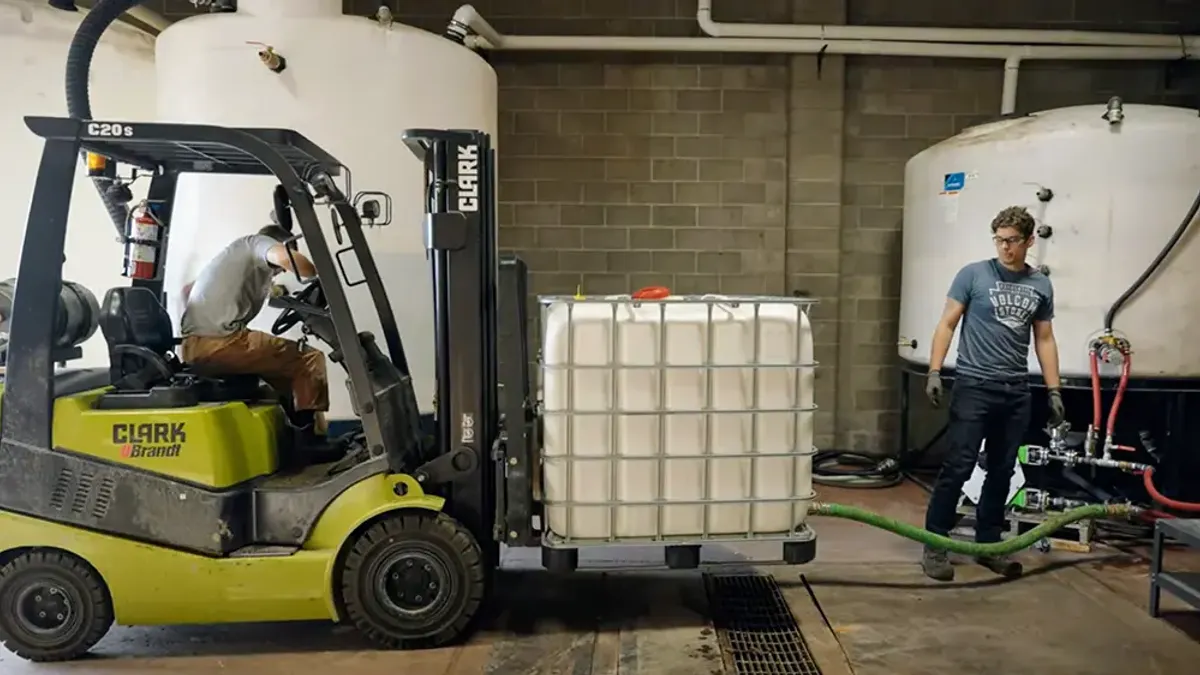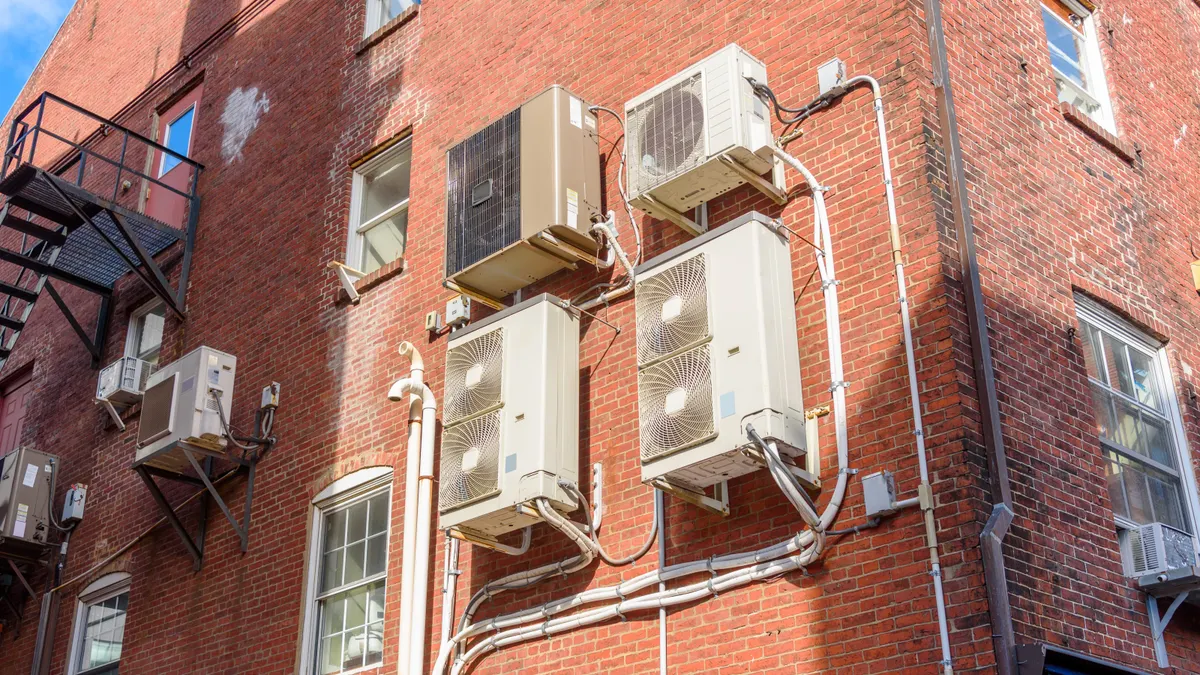As companies and experts shared details on how they were using artificial intelligence to innovate towards the clean energy transition, the growing use of the technology for sustainable outcomes still comes with its own environmental challenges.
Climate and ESG-related use cases for AI are on the rise, with companies using the technology to create sustainability reports and startups exploring opportunities to use AI to bridge health coverage gaps, identify wildfires and predict future infrastructure repairs. Managing AI’s environmental impact is still an ongoing challenge though, policy experts said during an April 29 panel at DC Climate Week.
Jonathan Gilmour, a data scientist for Harvard’s school of public health, said on the panel hosted at D.C.’s Martin Luther King Library that his lab primarily focuses on validation, accountability and sustainability when building out artificial intelligence models.
Gilmour said validation is important so people know why a particular AI model is trustworthy, so his lab trains its AI with reproducible tasks and “concrete protocols.” The model is then published for visibility as well. This also helps with accountability, as Gilmour’s lab currently focuses on open sourcing the lab’s AI models where possible, though achieving this is difficult when combined with the health information and data use agreements.
Sustainability, however, is the “elephant in the room with AI,” he said.
Large tech companies have looked towards zero-emissions sources like nuclear energy to power data centers — with both Apple and Microsoft looking to power at least part of their data center portfolio with nuclear generation. However, President Donald Trump sees the industry’s need for power as an opportunity to boost fossil fuels, including by looking at where coal-fired power generation is available to support AI data centers.
“We're now at a stage where AI and data centers that power it are competing directly with humans for land and water and energy,” Gilmour said. “We lack, oftentimes, the data about what those impacts are, and we can't make educated decisions about citing a new data center, or [know] ‘what is the [environmental] impact of uploading my image and getting a Studio Ghibli-style reproduction?’”
There’s a potential that the energy impact alone from increased AI adoption will lead to nearly 500 terawatt hours per year being allocated for data centers by 2028, or approximately 12% of current U.S. energy consumption, according to Oliver Stephenson, associate director of AI and emerging technology policy for the Federation of American Scientists.
Currently, data centers account for 3-4% of U.S. energy consumption. Stephenson said “if AI is perceived to be coming at the expense of the quality of people's local air and water, the affordability or reliability of their electricity supplies, [then] we're not being able to take full advantage of the benefits.”
That’s where transparency comes in, and regulations could help boost this transparency by implementing guardrails and providing research and funding to accelerate energy efficiency and data center efficiency needs, according to experts.
“There's a lot of opportunity with AI to take advantage of just making the infrastructure we have today more efficient,” said Chris Bradshaw, chief sustainability and education officer at Bentley Systems.
Bradshaw, whose firm develops software for infrastructure design, construction and operation, said that AI is useful for predicting which cracks in a road are likely to turn into “structural deficiencies” over time, as well as for identifying water leaks and other operational and maintenance issues.
Aneysha Bhat, founder and CEO of tech consultancy Annova Strategies and a former deputy associate administrator at the Small Business Administration, said that small businesses have an opportunity to innovate in the climate and environmental space with AI. In addition to things like wildfire detection, Bhat said generative AI can be a helpful tool for developing climate solutions, but it also requires considering how to mitigate the AI's environmental impacts.
“We have to approach this industry from an end to end process, looking upstream and looking downstream, because innovation can thrive across the board,” Bhat said. “As an entrepreneur, you can think about not only the downstream impact of how can I use ChatGPT to solve XYZ problem in the climate space, but taking it a step further than that, and taking it to the risk management space and thinking about, ‘I know that there are climate impacts when we use Chat GPT … but from an innovation perspective, what can we do to control those risks?”


















